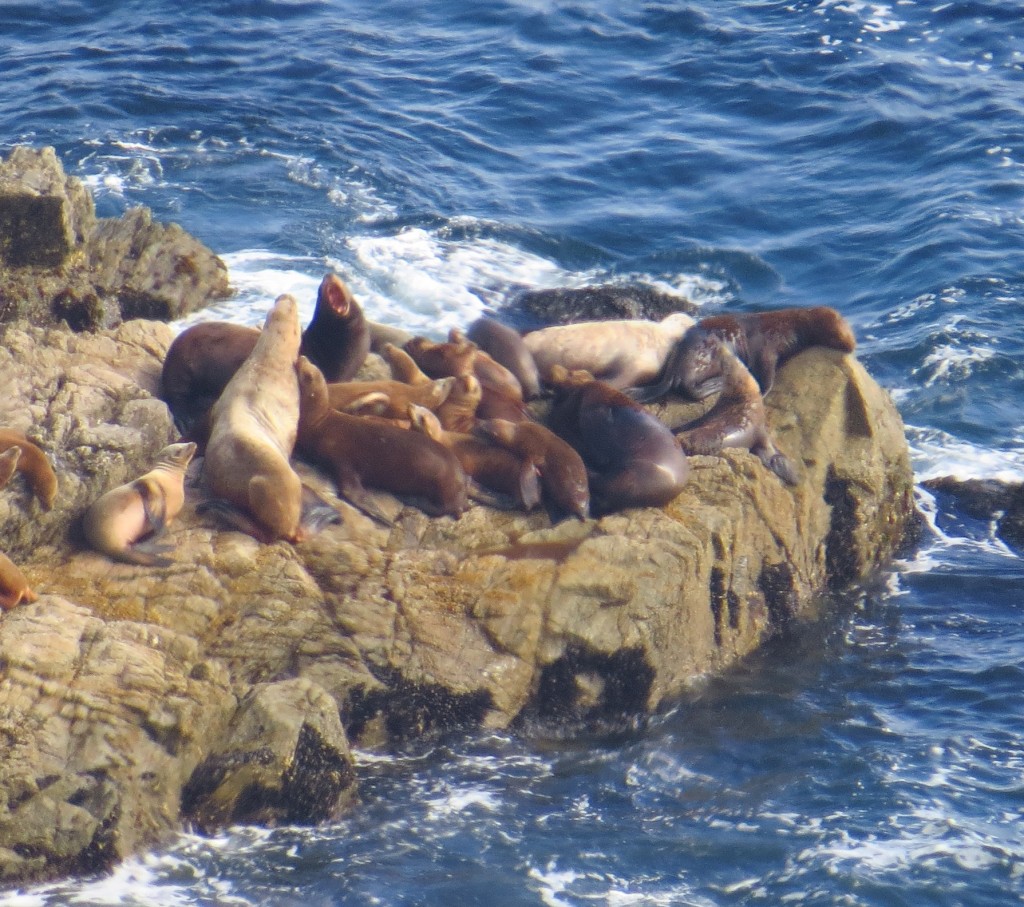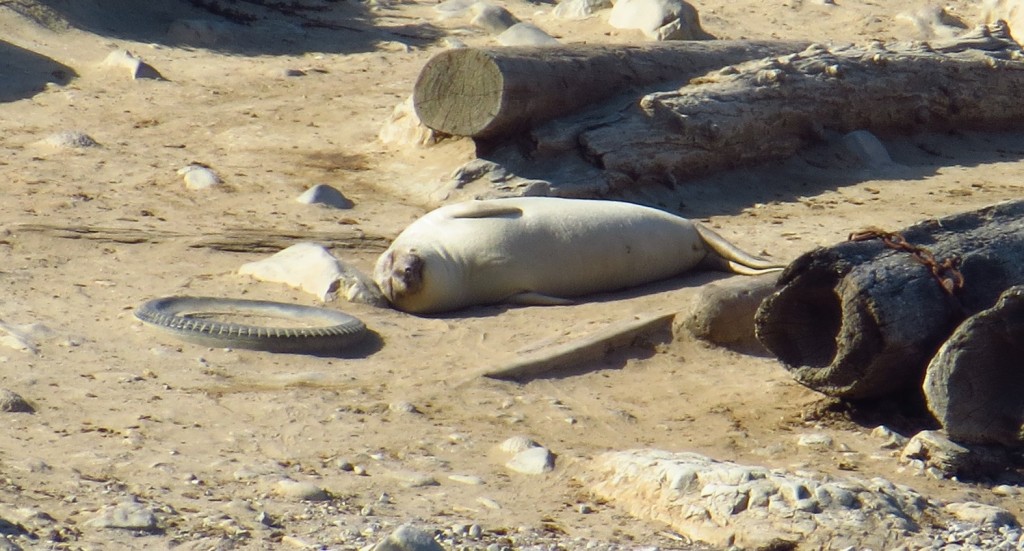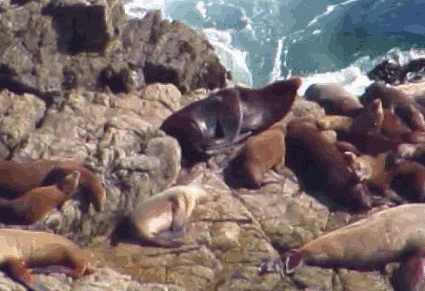There’s something glorious about .gifs, the short video clips that proliferate across the internet. Not quite as demanding of commitment as a full video, slightly more than a still image. These mighty little loops of endless wonder can express joy, surprise, or disdain far better than their static counterpart. They are an artform unique to the web.
Yet, somehow, the humble .gif has never garnered the same level of prestige as a carefully crafted photograph or a lovingly edited documentary. Heck, some science communicators think we should to away with .gifs completely. This is, of course, misguided.
Gifs can do something that still images can’t, they can show behavior. A good, well-made .gif can be used to illustrate the natural world with precision, clarity, verve, and even humor. Consider this image of two sea lions fighting over territory:

There’s drama. Energy. You can see the aggression in the bull sea lion’s face. But there’s also a lot missing. You can’t see the chaos on the haul out, the power of the moment, the speed and fury of the fight. Sure, I could post a video, but videos require a level of commitment that is not necessarily warranted to illuminate this moment. Give me three seconds of motion on a repeated loop and I can show you an incredible moment.

Likewise, it’s easy to say that elephant seals are among the least graceful animals to ever crawl up a beach. I could even go into great detail describing how they basically roll up the beach on waves of blubber. I could show you this picture, attempting to capture the sublime awkwardness of the moment:

Or, I could give you this:

Elephant seals, for the record, also have epic fights.

So, science communicators, natural historians, and nature photographers, consider this a call to action. Go forth, and take not just pictures, but shoot video. Short video. Video with the intent of making .gifs. The internet has given us yet another tool in the grand arsenal of science outreach. Don’t let is go to waste.
Wait, Andrew, are you saying we should give up on nature photography and become nature giphographers?
No! Of course not. Photographs have their own power. A brilliant still image can be just as compelling and powerful as one that moves.

These are simply tools to promote and enhance science communication. Gifs are not perfect for all situations, but natural history most certainly needs more of them.
So go forth, into nature, and, the next time you see a fascinating bit of animal behavior, consider hitting record. Here’s a fantastic guide to making .gifs from video using free, open-source software.
Until then, peace out.

Note: I release all the .gifs published on this post to the public domain. Go forth and spread joy.
I think gifs are fantastic and often share them with friends. And I agree that we need more nature / science ones! Not yet confident to make one myself though – maybe for this season’s To Do list?